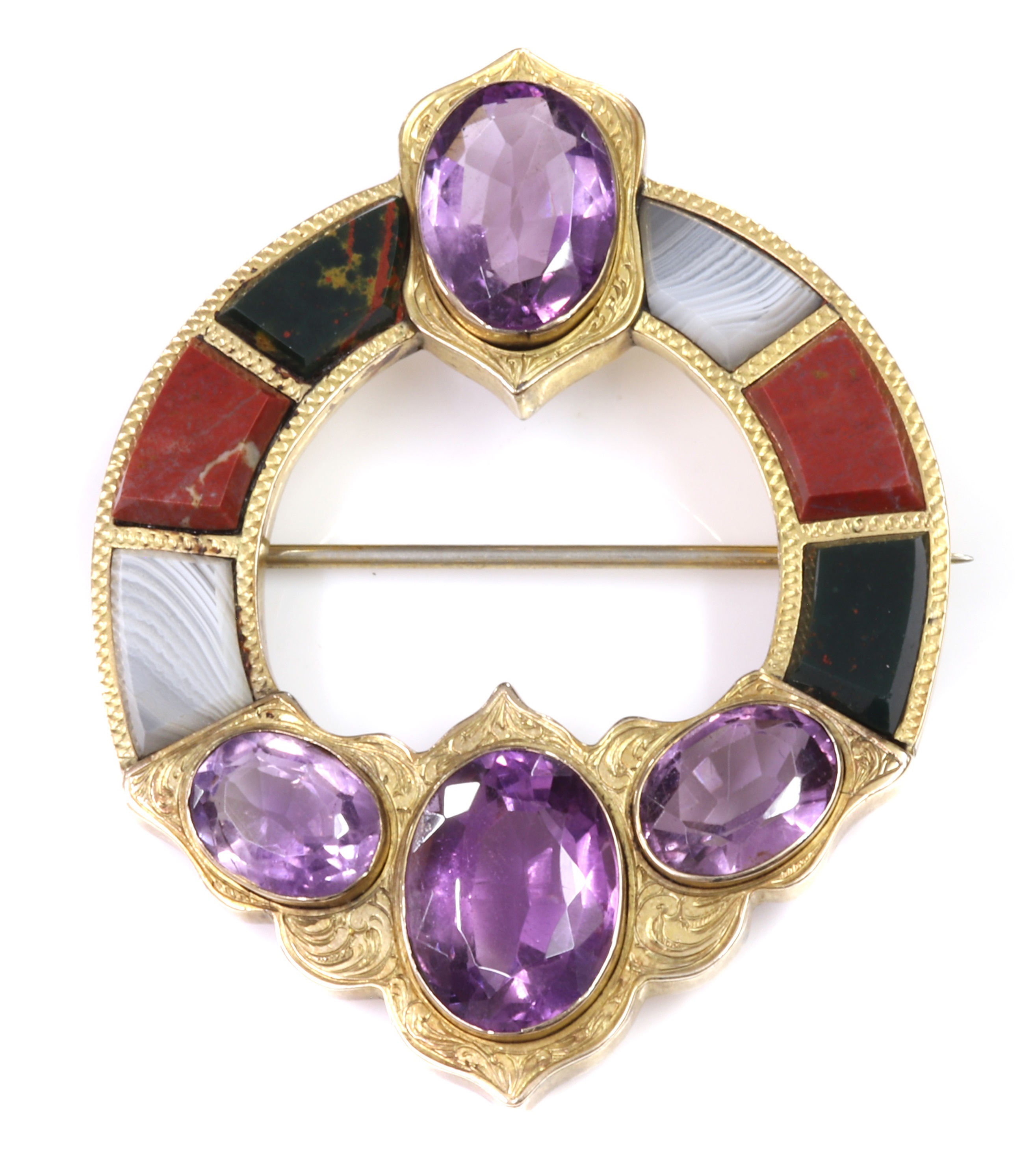

Traditional Scottish jewellery has captivated collectors for centuries, though recognition soared in the 19th century after it became a popular souvenir of Queen Victoria following her much loved trips to the Highlands.
2 November 2021
In the autumn of 1842, two and a half years after her marriage to Prince Albert, Queen Victoria took her first trip north of the border. They were both completely enamoured by the landscape and returned many times, culminating in the purchase of Balmoral Castle in 1852 (leased from 1847).
The story goes that during one of their early visits, Prince Albert found some pebbles on the banks of the River Dee in Aberdeenshire and had them polished and set into jewellery for his Queen. The aristocracy was a major influence on fashion in the 19th century and Queen Victoria’s love of all things Scottish propelled this distinctive type of jewellery to public view, sparking a trend that would spread across Europe and last for decades.

Lot 80 | A Scottish gold hardstone brooch - The Peter and Pat Crofts Collection
Estimate £400-500
So much was the hysteria for the style that Scottish jewellers were unable to keep up with demand and production had to be supplemented in England. By the mid-1800s, jewellers in other parts of Great Britain recognised the business opportunity and “Scottish” jewellery was soon being made in Birmingham and Exeter.
Typical examples from this period are characterised by native stones, specifically agates, amethyst, rock crystal, and granites, carefully arranged and inlaid in engraved settings of silver and gold, with intricate designs featuring Celtic knot motifs, flowers, leaves and other natural themes. Plaid brooches were particularly popular and one of the first designs to be snapped up by the masses due to being both beautiful and functional, securing heavy Victorian garments in place.

Lot 81 | A Scottish silver hardstone garter style circle brooch (sold together with a Scottish silver hardstone cello brooch) - The Peter and Pat Crofts Collection
Estimate £200-300
Jewellery symbolism played an important part in Victorian life, and certain motifs were highly sought after, including designs featuring buckles, used to represent eternity, loyalty, strength and protection, as seen in lot 81 in our auction of Fine Jewellery and Watches on Tuesday 30 November.
Scottish jewellery was at its height of popularity between 1845 – 1870 but remained fashionable until the turn of the century. Surviving pieces in good condition, such as those in our forthcoming sale, are just waiting to be discovered and treasured as Queen Victoria herself would have done.
Featured in the April 23 Homes & Interior sale is a wonderful private collection of Georgian shoe buckles. Inherited from the vendor’s parents, and even from their grandparents, they were acquired over a prolonged period with antique shops and Portobello market being popular hunting grounds.
19 April 2024
The Homes & Interiors Department are delighted to present a collection of military campaign medals. The 33 lots, sold by a local lady whose late husband was a keen collector, include an example of the most famous gallantry medals - the Waterloo Medal.
19 April 2024
The Sculpture Park is an online sale running from 26 April to 19 May featuring over 400 lots which are part of an enormous collection of modern and contemporary sculpture assembled by the renowned artist, collector and dealer, Eddie Powell. With estimates ranging from £200-300 to £400,000-600,000 there is something to suit all budgets.
15 April 2024